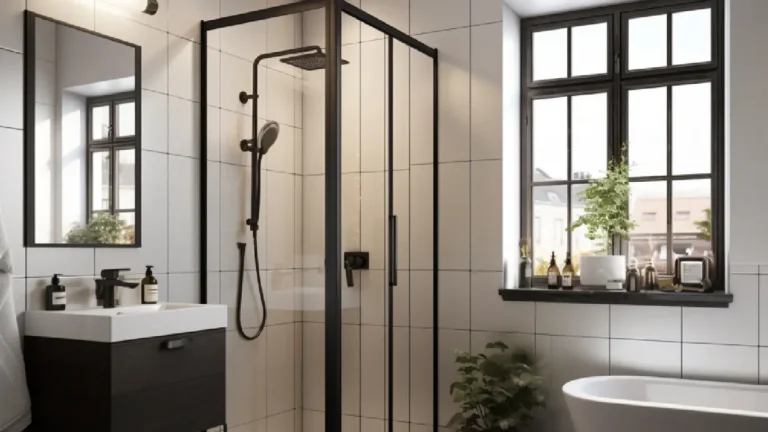A semi-frameless enclosure, unlike a framed shower, uses minimal framing, such as small metal hinges or braces connecting panels, to support the glass and provide the integrity of the structure, allowing a modern appearance that’s similar to frameless enclosures. While framed enclosures use metal braces to support the bottom, top, and panels, semi-frameless enclosures use clamps and hinges to hold the glass in place, proving a minimalist style.
Below, we provide some useful information about different types of semi-frameless enclosures as well as their advantages and disadvantages. We hope this guide can help you choose the best enclosure for your bathroom.
Different Types of Semi-Frameless Enclosures
Semi-frameless glass shower enclosures have different types, including:
Cardinal semi-frameless shower enclosures
The leading supplier of tub and shower enclosures is Cardinal Shower Enclosures. The Cardinal series is just one type of semi-frameless enclosure with metal framing on the door jamb side and bottom of the enclosures. Cardinal showers are well-known for their high-quality construction and sleek design and are available in a variety of styles and configurations to fit any bathroom style.
Semi-frameless pivot shower door
The pivoting shower door would be a door that, when we secure it into the opening, would have two pivot points at the top and bottom, along with either a left or right side that would close and open those two pivot points.
It swings like a traditional door; it can swing out, it can swing in. A lot of the swing’s location is determined by the space of the room and the size of the shower.
One advantage of using a pivoting door is that there’s no track at the bottom, so because the pivots open outward, there’s nothing to get nasty or dirty over time. Another advantage is that it’s often associated with more luxurious or high-end types of projects.
The disadvantage of some pivoting doors is that the door is obviously going to swing out into the room. There are times when the door is wet after a shower and you swing it out of the room, and then the floor becomes wet because the shower door is draining off and spilling onto the floor.
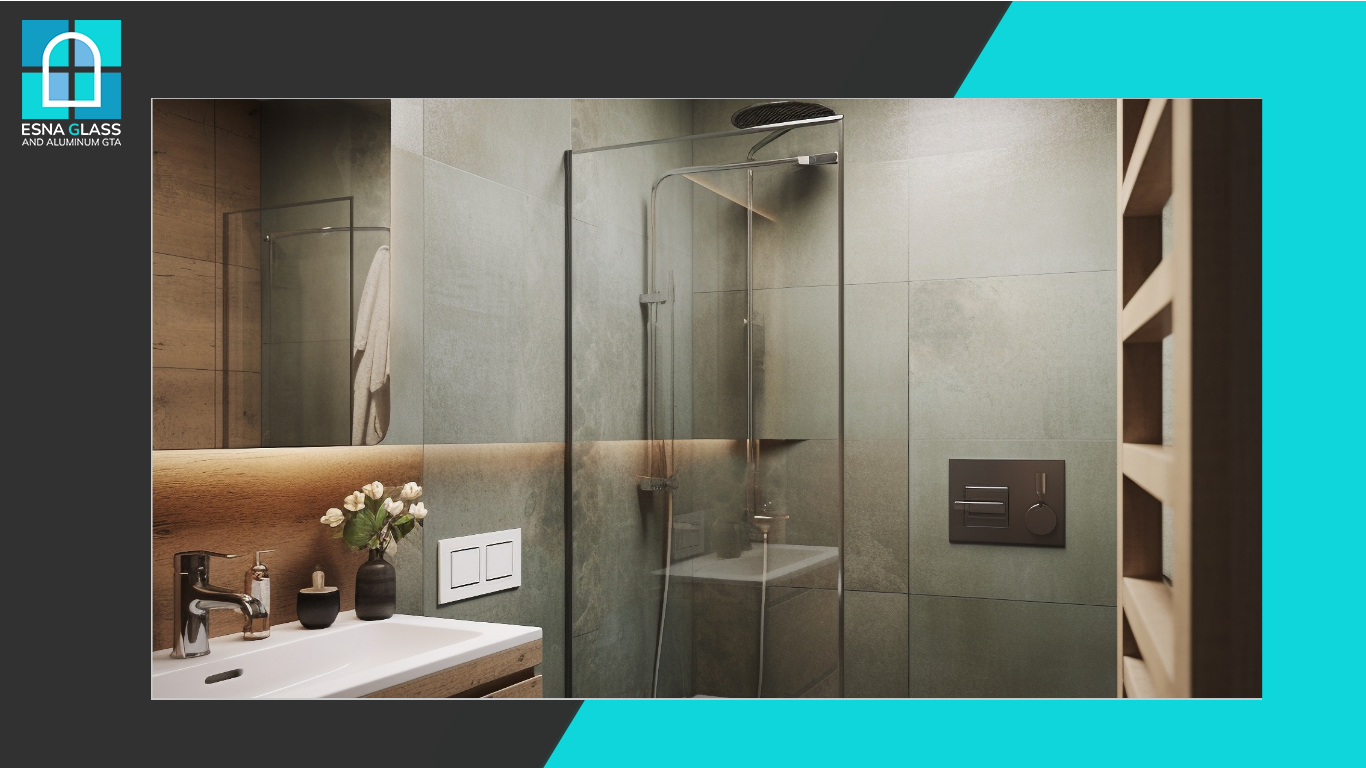
Another advantage of the door is that it allows you to put a door in a tight opening. So if you have a very small space, a pivot door is basically the only way you can go with.
With a sliding door, when one door comes into the other, there’s usually an overlap between the two doors, so the opening or the space you can get into is usually not so big. But with the pivoting door, the whole door hinges and opens up, so you get a larger opening than a sliding door, which can often make it safer for a loved one who may be mobility challenged.
We’re usually talking about a smaller opening that may be anywhere from 24 to 30 inches. The advantage to the pivot door is that if we’re doing a remodeling project, we can’t always be 100% accurate on the measurement of when we’re finished with that tiling or central product. We can’t be 100% sure what that opening size will end up being.
So with a pivot door, when we installed that door, we had about a two-and-a-half-inch plate that would allow us to make that door fit properly. Whereas if we use a hinged door, that hinged door has to be an exact measurement. So the advantage of the pivot doors is that they have a little bit of play due to the fact that we’re not going to know exactly what that opening is.
You can get a pivoting door with clear glass, but you can also get a pivoting door with obscure glass. When you get the obscure glass, you can get just kind of a standard obscure pattern or you can get kind of a rainfall pattern, which looks kind of neat and has become popular. So you can get different types of obscurity and different types of privacy.
If it’s a framed glass door, you can also get different types of Hardware on there. So whether that Hardware is chrome, whether it’s brushed nickel, whether it’s oil-rubbed bronze, usually people are trying to match those up to the shower hardware or the drain as well.
So this way, everything’s kind of pulled together with the bathroom in space.
Semi-Frameless Tub Door
A semi-frameless glass tub is an elegant way to enhance the appearance of your bathroom. Instead of using metal frames in their construction, hinges, framing, and handles are used.
It has two panels that seamlessly blend into each other: one with a pull handle for one edge of the glass and another with a towel bar that wraps around the glass. Due to the lack of frames, cleaning them is a bit easier than framing ones, and they usually end up having a longer lifespan.
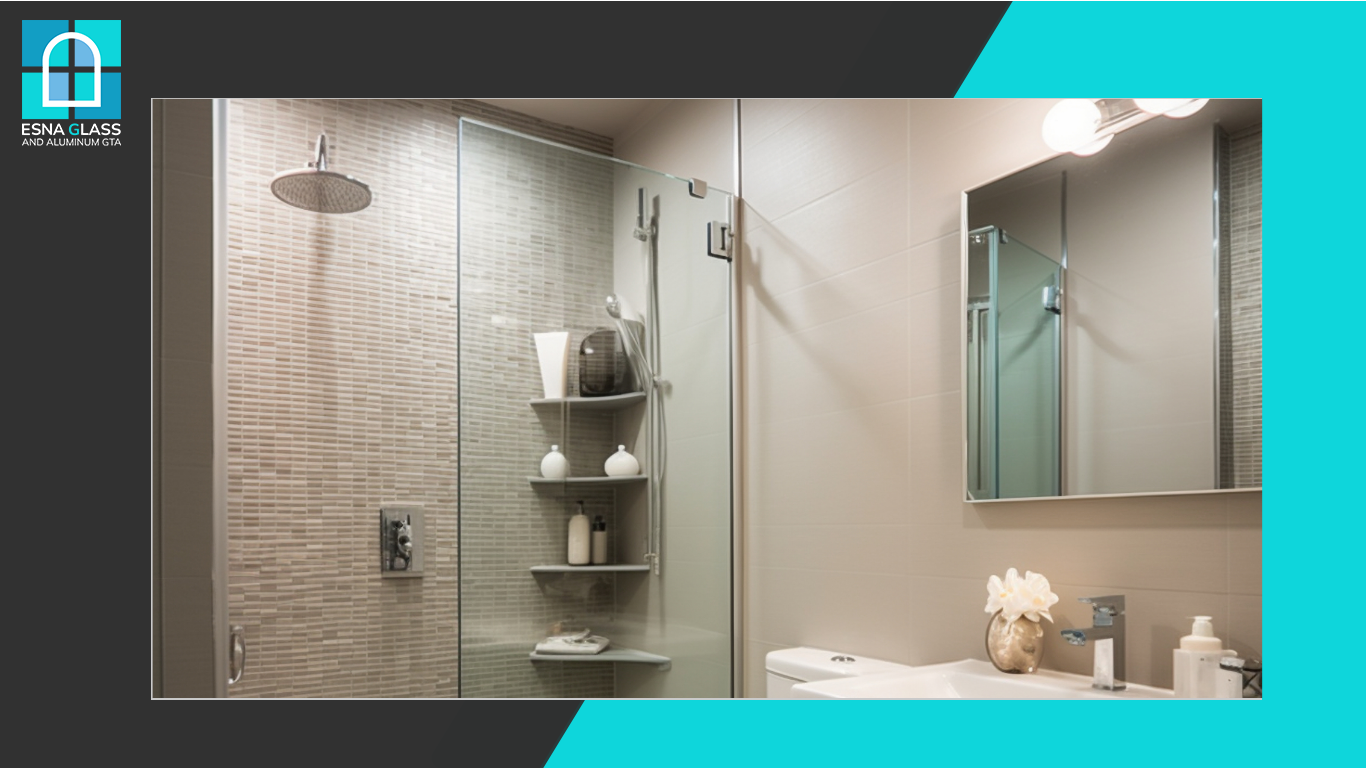
Advantages of Semi-Frameless Shower Enclosures
The installation process of a semi-frameless shower enclosure is faster and gives you the opportunity to choose from a large variety of patterned glass.
For installing them, one man is enough, and it can even be done as a DIY project. Moreover, transporting them to the location is much easier than transporting heavy 10mm glass.
Here are some other benefits of semi-frameless enclosures:
- More luxurious look
- Simple to clean due to a lack of seal and less silicon and framing.
- A bigger opening even in tight or small entry areas due to a lack of pivot blocks and wall frames.
- No trip hazard on the entry floor due to a lack of track.
- Increased stability and durability compared to frameless enclosures
- Less possibility of mold and corrosion.
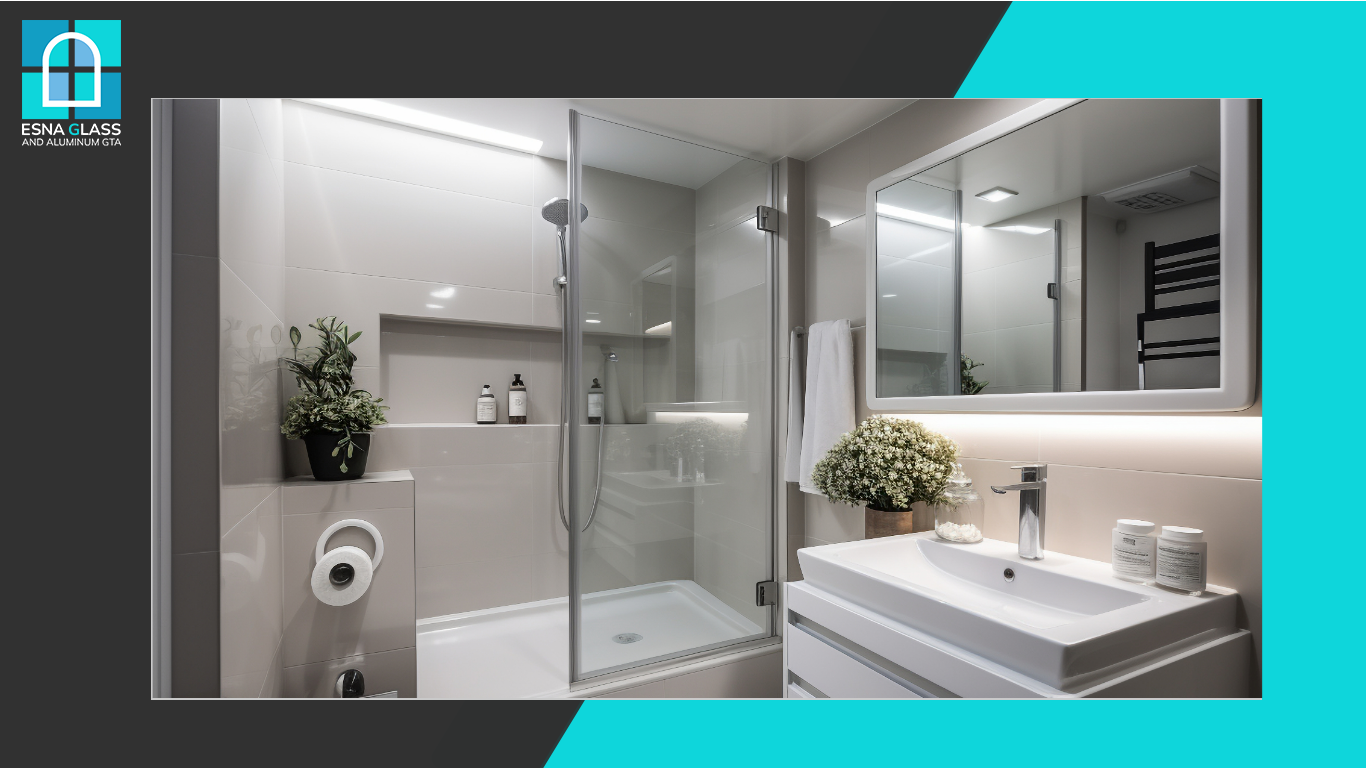
Disadvantages of Semi-Frameless Shower Enclosures.
If the glass doesn’t fit properly to the exact dimensions of the shower space, the possibility of water leakage is considerably high. It’s mainly due to fewer seals and insulation materials in their construction.
Another concern associated with these kinds of enclosures is their expensive upfront cost. Although the cost of thicker glass required for semi-frameless enclosures is pretty high, it’s a worthwhile upgrade because it can increase the value of your home significantly.
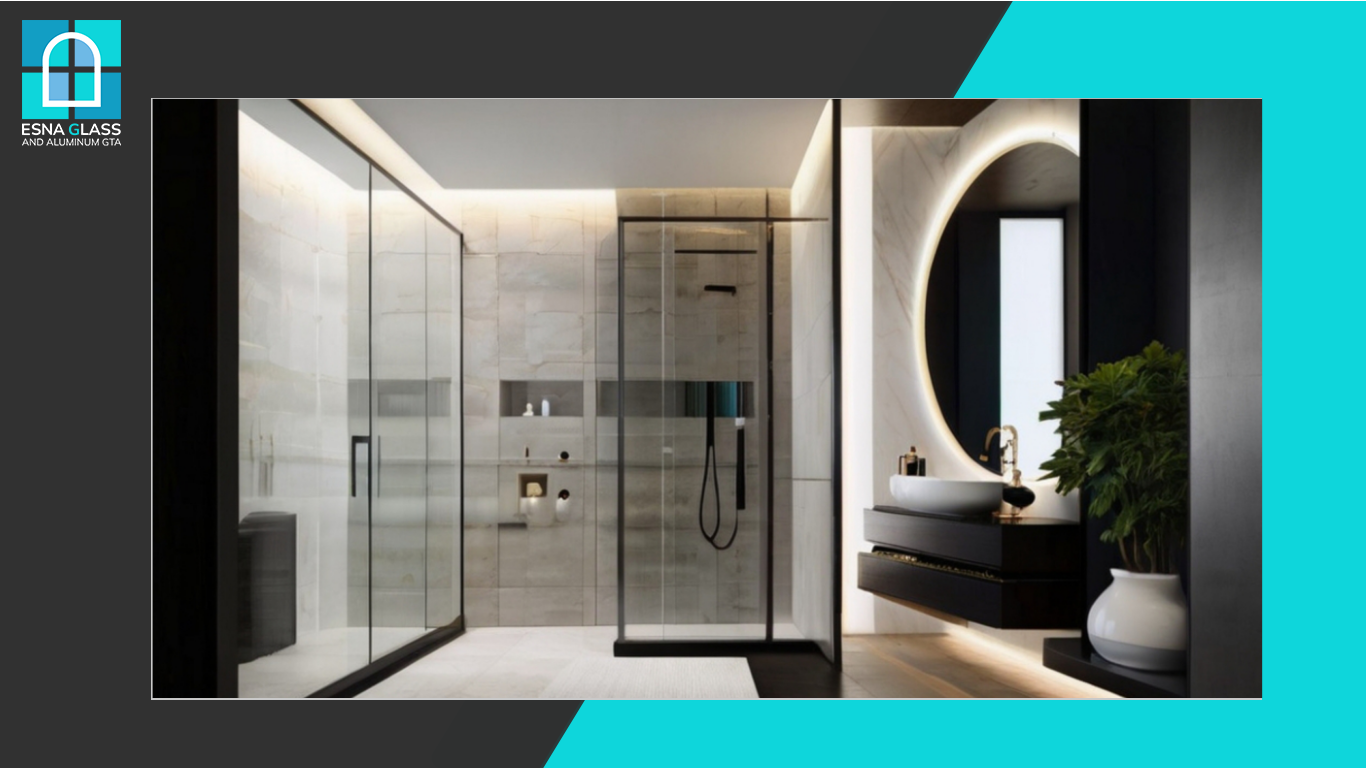
FAQ
What is semi-frameless?
Unlike frameless shower enclosures, semi-frameless enclosures typically have frames only on the top and bottom of glass panels, with sides held in place by clips or channels, providing a sleek and modern appearance that affects the overall value of your home.
They are easy to install and have a bigger opening, so they can be a better option for loved ones who may have mobility challenges. But they need thicker glass, which may increase the upfront cost for homeowners.
What’s the difference between frameless and semi-frameless?
A semi-frameless shower contains some framing along the edges of the glass, while a frameless shower screen has no frame at all. Frameless shower screens typically require thicker glass than semi-frameless ones and are secured using metal clips and channels. On a semi-frameless shower screen, you’ll see a combination of clips, channels, and framing to secure the glass.
The amount of framing used in semi-frameless screens varies, with some framing only along the top and bottom edges of the glass, while others may have framing on all sides except for the doors.
Which is better frameless or semi-frameless shower door?
The choice between the two ultimately depends on your budget and preferences. Frameless shower screens have no frame at all and secure glass with clips or channels, requiring precise measurements and professional installation. They’re generally more expensive due to the thicker glass they require.
Semi-frameless enclosures, on the other hand, use a combination of framing, clips, and channels to securely hold the glass in place. They are generally less expensive than frameless screens, making them a more budget-friendly option.
Bottom line
If you need professional help installing any kind of glass enclosure for your bathroom, contact us at Esna. We offer 24/7 services for the installation or repair of aluminum frames, glass partitions, vestibule doors, board-ups, shower enclosures, glass replacements, and more for both residential and commercial properties.



